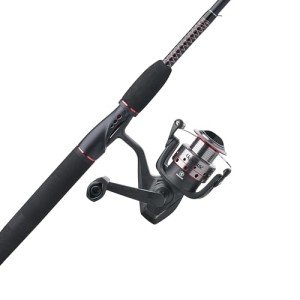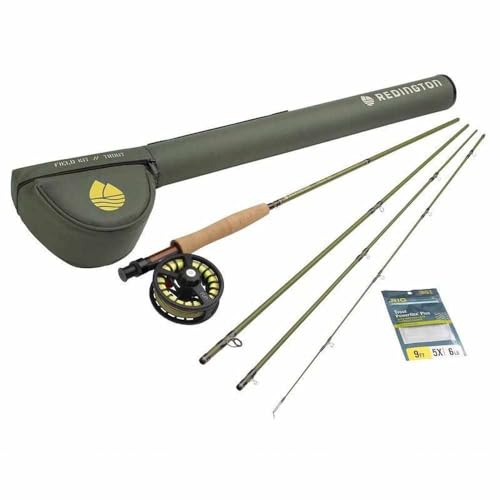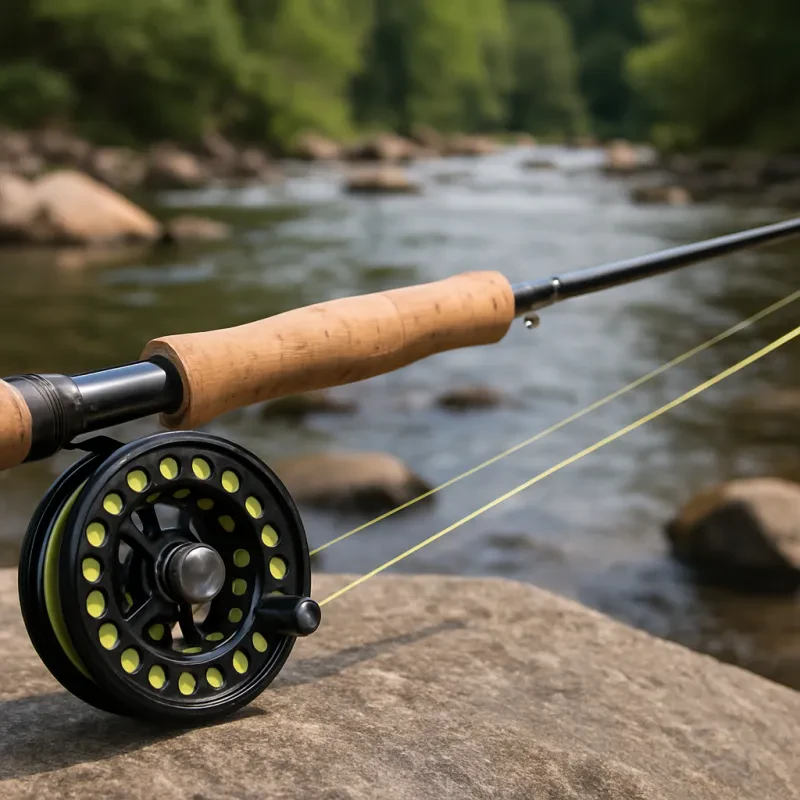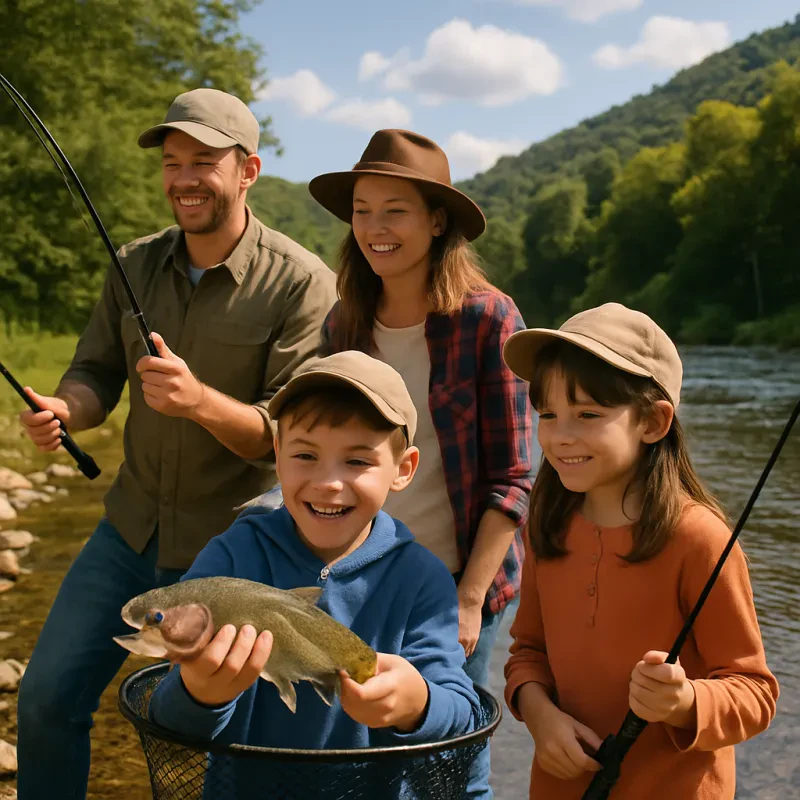If you’re looking to cast your line in West Virginia, you’re in for a treat! The state is home to some fantastic spots for trout fishing, making it a popular destination for anglers of all skill levels. Let's dive into some of the best spots that the WV DNR has to offer for trout fishing.
1. Cranberry River
This river is known for its stunning scenery and abundant trout population. You’ll find both stocked and wild trout here, making it a great choice for anyone looking to land a big one. The best time to fish is right after a stocking event, so keep an eye on the WV DNR’s updates!
2. Blackwater River
The Blackwater River is a hidden gem nestled in the heart of the state. With its clear waters and beautiful surroundings, this spot offers a peaceful fishing experience. Don’t forget to bring your camera; the views are breathtaking! Look for rainbow and brown trout here.
3. Shaver’s Fork
This stream is perfect if you enjoy a bit of solitude while you fish. The gentle flow and diverse habitats make it ideal for trout. The WV DNR often stocks it, so you're likely to catch some nice fish throughout the season. Pack your gear and get ready for a day of relaxation and great fishing!
4. Cheat River
For those who love some adventure, the Cheat River is where to go. This spot offers thrilling fishing opportunities with plenty of stocked trout. The river can get a bit rough, so make sure you’re prepared for some fun challenges as you try to reel in your catch!
Essential Gear for Your Fishing Trip
Heading out for a fishing trip can be a lot of fun, but having the right gear is essential—especially when you’re planning on wading into the waters for some wv dnr trout fishing. To make your trip enjoyable and successful, here’s a quick rundown of must-have items that’ll keep you prepared.
- Fishing Rod and Reel: Choose a lightweight rod that's easy to handle. A good spinning reel can make casting much simpler, especially if you're new to fishing.
- Fishing Line: Look for a quality line that matches the weight of the rods you're using. A good rule of thumb is to go for a 4 to 6-pound test line for trout.
- Bait and Lures: Live bait like worms work wonders, but having a variety of lures—like spinners and spoons—can help you find what the fish are into that day.
- Fishing Tackle Box: Keeping everything organized is key. A tackle box with adjustable compartments will help you sort your hooks, lures, and other small tools neatly.
- Waders: If you plan to fish in streams, a good pair of waders can keep you comfortable and dry while giving you access to the best spots for wv dnr trout.
Don't forget to pack some snacks and water too! It’s easy to lose track of time while fishing, and staying hydrated and energized is important. With these essentials, you’ll be well on your way to a fun and successful fishing adventure!
Tips for Catching More Trout
Looking to up your game while fishing for trout? Here are some simple tips that can help you catch more when you're out there exploring those beautiful waters in West Virginia. Whether you’re a beginner or someone who's been fishing for years, these little tricks can make a big difference!
First off, pay attention to the season and weather. Trout are more active during cooler months, like spring and fall. Early morning and late afternoon are usually the best times to cast your line. When it’s warmer, look for cooler spots under rocks or in shaded areas. Knowing the patterns helps you choose the right time to fish, which is key for your success.
Next, think about your bait options. Some local favorites include worms, minnows, and artificial lures designed for trout. Experiment to see what the fish are biting on that day. Also, it’s good to match your bait with the size of the trout in the area. Don't hesitate to change things up if you're not getting bites. Sometimes, switching to a different color or size can do wonders.
Lastly, make sure to check out the regulations from the WV DNR trout program. They have guidelines for fishing locations, size limits, and seasonal rules that can help you fish responsibly. Plus, understanding these rules means you can enjoy your time on the water and keep the trout population thriving for years to come!
Seasonal Trout Fishing Strategies to Use
When it comes to seasonal trout fishing in West Virginia, it's all about adapting to the changing conditions throughout the year. Each season brings unique challenges and opportunities to hook that prized catch. If you're planning to spend some time on the water, here are some straightforward strategies you can use, especially if you're following the wv dnr trout guidelines!
Spring: As the water starts warming up, trout become more active. Focus on streams and rivers that are swollen from the melting snow. Look for areas with cover, like fallen trees or rocks, where trout like to hang out. In early spring, using spinners or small jigs can attract their attention. Don't forget to check the local hatches; matching your bait to whatever insects are coming off the water can significantly increase your chances.
Summer: In the warmer months, trout tend to seek cooler, deeper holes. Early mornings and late evenings are prime times for fishing, as trout are more likely to be near the surface to feed. Try using lightweight gear and a smaller hook to present your bait naturally. During summer, consider using flies or lightweight lures that mimic minnows to catch their eye.
Fall: As water temperatures start to drop again, trout will enter a feeding frenzy to prepare for winter. This is an excellent time to experiment with various bait types. Streamers, spinners, and spoons can all be effective. Look for trout in shallow waters as they become more aggressive and seek food before the cold sets in. Pay attention to areas where rain has stirred up the water; these spots can be gold mines for catching wv dnr trout.
Winter: Winter fishing might sound tough, but it's rewarding! Trout behavior changes as they become lethargic; however, they still feed, especially during warmer sunny days. Finding deeper pools is key. Use a slow presentation and try ice fishing or fishing under the ice if it's safe. Small jigs or simple bait setups can work wonders. Do your homework on local regulations and adapt your techniques accordingly to make the most of your winter trout adventures!







